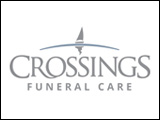It’s cycling season and Manitoba’s public auto insurer, in partnership with the City of Winnipeg, is raising awareness about cyclists and motorists safely sharing the road.
Today a safety demonstration was staged in Winnipeg, visually showing the dangers of vehicle blind spots and how cyclists can avoid a collision.
“Turning and side-swipe collisions are two of the most common collisions involving cyclists, according to claims data,” said MaryAnn Kempe, vice-president, Business Development, Communications and Chief Product Officer, Manitoba Public Insurance.
“Maintaining visibility is vital to preventing these types of collisions – especially when it comes to large vehicles. If cyclists and motorists can see each other, then these types of collisions could be avoided. From a cyclist’s perspective, if you cannot see the driver from where you are on the road, then you also need to assume that they cannot see you.”
Having the ability to identify a vehicle’s blind spot would be very beneficial to cyclists.
“Cyclists are strongly encouraged to ride defensively and anticipate when they are riding into a potentially dangerous situation,” said Sgt. Rob Riffel of the Winnipeg Police Service. “Motorists and cyclists are both entitled to be on the roadways. There should be a mutual respect for both groups.”
Three Manitobans are killed and 250 others are injured each year in bicycle collisions, according to claims data released by Manitoba Public Insurance. The data shows there was an average of 269 bicycle-motor vehicle collisions from 2007-2011, with the majority (98.4 per cent) occurring in urban centres.
“Maintaining visibility to drivers applies in all cases,” said Dave Elmore, CAN-Bike Master Instructor and former Director of Safety and Education for Bike Winnipeg. “When approaching an intersection, bicyclists should always shoulder check and signal before positioning themselves in the middle of the lane. This makes you more visible to both the vehicle in front and behind you.
“It also provides you with the needed space to start up again without tons of steel directly beside you. With larger vehicles you need to stay far enough back to remain in the field of vision of the driver’s mirrors. This can mean positioning yourself well back and in some cases slightly further to the left of the centre of the lane so that you can be seen.”
Under no circumstance should a bike rider ever pass motor vehicles on the right or position themselves to the right of vehicles at an intersection, stressed Elmore.
“In this position you put yourself at risk of the driver not knowing that you are there and turning right into you as you try to proceed straight through the intersection. All passing should be done on the left.”
About one in 10 cycling collisions took place when the vehicle, or cyclist, was making a left turn across an intersection.
“The data clearly shows that cycling collisions that involve turning and side-swiping are all too common,” said Kempe. “As the cycling community grows in numbers, so does the need for an increased awareness of road safety. Knowing the rules of the road and being aware of potential dangers will make our roads safer for everyone.”



